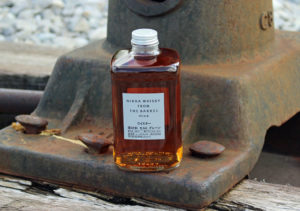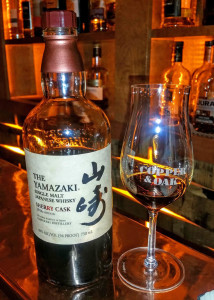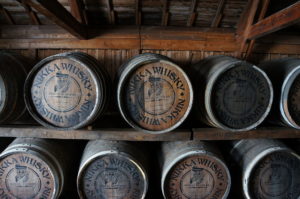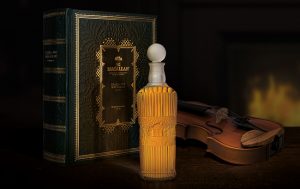By Richard Thomas Whenever I want a short explanation for the roots of modern whisky-making, I say it originated with the Irish and Scots, and was carried by immigrants from those places to the United States and Canada. That covers four of the five major whisky-making countries.The Japanese, on the other hand, don’t fit into …
By Richard Thomas
Whenever I want a short explanation for the roots of modern whisky-making, I say it originated with the Irish and Scots, and was carried by immigrants from those places to the United States and Canada. That covers four of the five major whisky-making countries.The Japanese, on the other hand, don’t fit into that neat, fairly accurate tale. They consciously adopted whisky-making as part of their push towards modernization in the late 19th and early 20th Century, a time when the Japanese were adopting many Western affectations. Although it is said Japan began making whiskey in the 1870s, it was some decades after that when these efforts became substantial and recognizable, and two men were instrumental in making it so. The work of this pair continue to have a dominant influence over Japanese Whisky to this day, because they left us with the industry’s two dominant companies: Suntory and Nikka.
Japan’s Founding Duo
The first of these was Shinjiro Torii, born in 1879 in Osaka and trained as a pharmacist’s apprentice. While working for a pharmaceutical wholesaler in his teens, Torii became familiar with Western spirits and began teaching himself the art of blending. In 1899, he set up the Torii Shoten shop and launched Akadama Sweet Wine. Torii’s real ambition, however, was to make whisky in Japan. This led him to found The Yamazaki Distillery in 1923, and launch Japan’s first entirely domestic whisky, Suntory White Label.
The other man is Masataka Taketsuru, born in 1894 in Hiroshima to a family of long standing in the sake brewing trade. Shinjiro Torii was largely self-taught, and for much of his company’s expertise, he had to rely on hired experts. Taketsuru was one such expert.
Masataka Taketsuru was sent by a company called Settsu Shuzo to Scotland specifically to study whisky-making, and bring that knowledge back to Japan. He first studied chemistry at the University of Glasgow in 1918. Next, he took an internship at Longmorn and then Bo’Ness distilleries in 1919, and learned whisky-making first-hand from leaders of the industry. Some accounts say he interned at a third distillery. He even married a Scotswoman, Rita.
In 1920, the pair moved to Japan, but in the meantime an economic downturn had forced Settsu Shuzo to abandon their plans to start a whisky distillery. Thus, Taketsuru and his unique base of experience were picked up by Torii and the company that would become Suntory in 1923, as the Yamazaki Distillery was under construction.
After spending 10 years building up Suntory, would go on to found his own distillery, Yoichi, in 1934. Upon that foundation, he launched his whisky brand six years later: Nikka. Taketsuru wasn’t the first, but he is widely referred to as the “Father of Japanese Whisky,” a just title when one considers his fingerprints are all over Japan’s first distillery, and he then went on to found its second major whisky company.
The Twin Pillars Of Japanese Whisky

Nikka From The Barrel
(Credit: Richard Thomas)
Nikka and Suntory have become the two goliaths of Japanese Whisky. There are other producers, but that comparison is like comparing Old Potrero to Jim Beam. Suntory owns the aforementioned Yamazaki, Hakushu and Chita. Nikka owns Yoichi and Miyagikyo. Outside this pair of companies are Akkeshi (owned by a grocery wholesaler), Chichibu (founded by the grandson of the distiller of the defunct Hanyu Distillery), Fuji Gotemba, owned by Kirin Breweries (also owner of Four Roses Bourbon), Kurayoshi and Shinshu Mars.
A idiosyncratic feature of Japan’s business culture and economy is the keiretsu, an interlocking alliance of firms centered on a bank. These keiretsu are a post-war phenomenon; before the Second World War, even more tightly integrated zaibatsu were the norm. The idea here is that whenever possible, Japanese business culture encourages a company to do everything it can in-house or at least in-alliance; when it can’t vertically integrate everything under one roof, it builds the roof out in these alliances.
This culture can be seen in the way Japanese whisky-making consolidated mostly into two major companies, and how those two companies organized their business. Compare the Japanese industry to the Irish industry up until about 2010. Japan had two large firms and a few small ones; Ireland had three large firms. In Ireland, those firms often quietly traded whiskey stock between each other and sold stock to independent parties; in Japan, there is no such sharing and never has been. All the stock Suntory uses to make it’s products come from within the company, so that stock must necessarily cover a wide spectrum of profiles. This is a reflection of both industry rivalries and the insular nature of keiretsu culture.
As a result, Nikka and Suntory evolved, rather by accident, into a hybrid of the different ways the whiskey industry is organized around the world. Compare Suntory or Nikka to William Grant & Sons, for example. Insofar as their Scotch operations go, the company produces single malt and grain whiskies from a handful of distilleries, such as The Glenfiddich. In this respect, the Japanese whisky company is superficially similar.

(Credit: Kurt Maitland)
William Grant & Sons draws on a wider array of whiskies for making blends like Grant’s, however, whereas Japanese companies work entirely in-house. As a result, a Japanese distillery doesn’t have a “house style” in the way that a Scottish one does; the closest equivalent would be a large American or Canadian distillery, where a variety of styles are made in-house, only moreso. The Americans and Canadians may do more in-house, they do not pursue industrial autarky the way the Japanese do.
Lawless Japan
Another interesting quirk of Japanese Whisky is that, until 2021, there was no law or regulation defining just what the drink was and was not. Even now, there isn’t really a Japanese Whisky Law. However, the Japanese Spirits & Liqueur Makers Association has enacted a code of standards, effective for members of the trade group. Although Nikka and Suntory were not known to do this, other brands have incorporated whiskies made outside Japan and Japanese, not-whisky spirits like shochu into their products. Thus, some Japanese whiskies had more in common with Indian whiskies, which often incorporate imported whiskies or a domestic, rum-like spirit into their blends. A transitional grace period is currently in effect, closing in 2024.








 Rested for 15 minutes in a Glencairn
Rested for 15 minutes in a Glencairn Nose: Butterscotch, caramel, vanilla, buttery (butter rum?), light pastry dough, brown sugar sweetness, light minerality; mild rye spices, oak and cedar; some fruit punch develops after a few sips; moderate alcohol
Nose: Butterscotch, caramel, vanilla, buttery (butter rum?), light pastry dough, brown sugar sweetness, light minerality; mild rye spices, oak and cedar; some fruit punch develops after a few sips; moderate alcohol


 If any of these are true, then check out
If any of these are true, then check out 





















